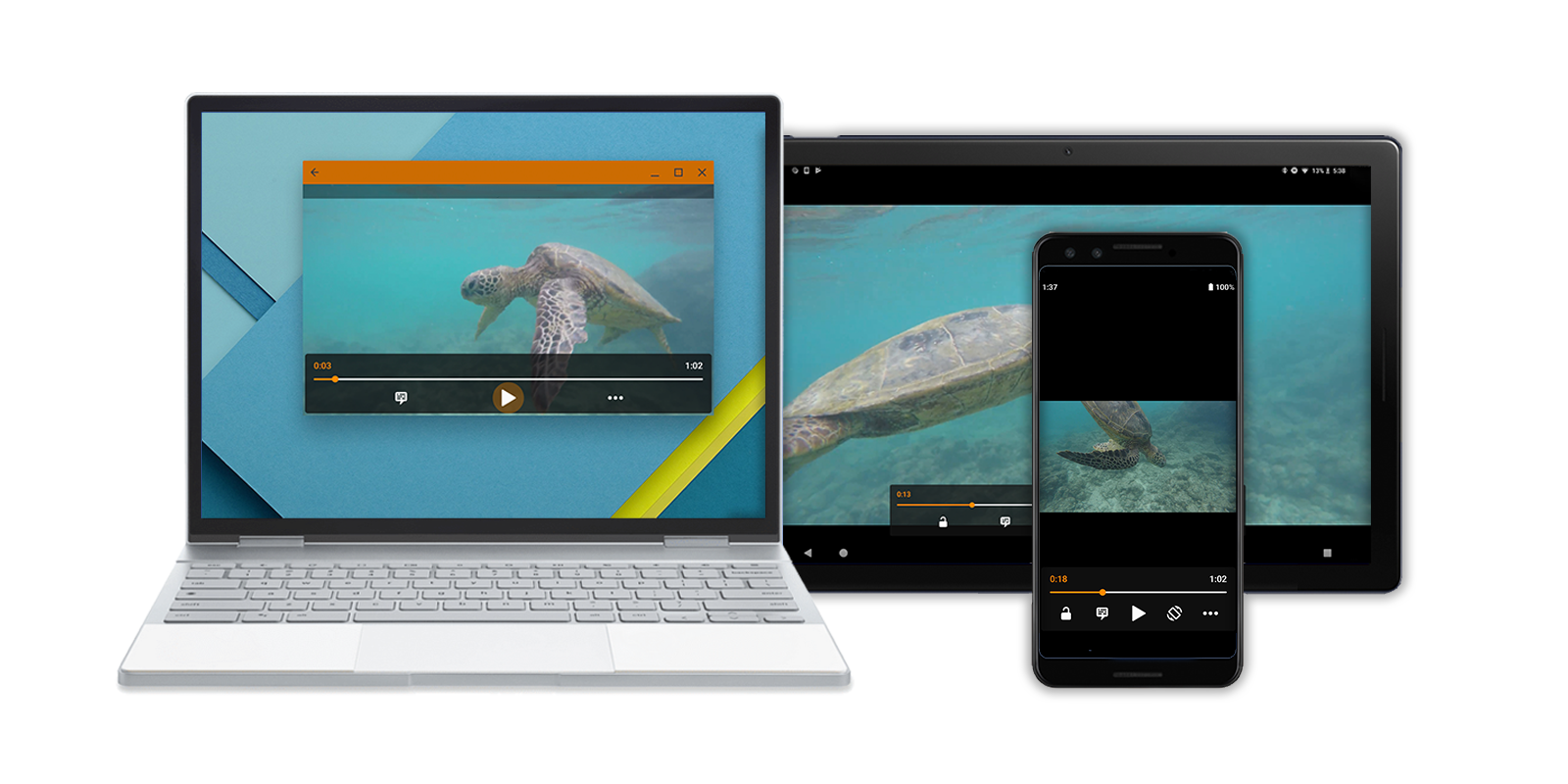VLC 是由 VideoLAN 项目开发的一款免费开源跨平台多媒体播放器。 与所有文件和屏幕的无缝兼容是 VLC 的设计核心。VLC 能够播放大多数本地视频和音频文件并支持各种流式传输协议,有很多第三方应用使用 VLC 引擎来处理视频播放。总而言之,VideoLAN 的开发者希望用户可以随时随地播放所有内容,无论他们倾向于何种设备或屏幕尺寸。
该团队最初设计了适用于 Android 的 VLC 应用,不久后用户就开始要求在 Chromebook 上提供相同的体验。这时,VideoLAN 发现了机会,通过将 VLC 引入 ChromeOS,为用户提供桌面设备式的体验。
通过针对 ChromeOS 和更大屏幕优化 Android 应用,并从一开始就支持 x86 和 64 位 ARM,VideoLAN 确保 VLC 用户可以在各种不同的设备和外形规格上获得相同的沉浸式体验。
策略
该团队首先关注的是 VLC 用户青睐的桌面设备功能,例如鼠标输入、右键菜单,同时确保外部存储空间(即硬盘和 USB 存储器)正常运作。然后,他们开始调整应用的布局和功能,以确保用户可以在类似桌面设备的环境中享受同样的功能。
键盘和鼠标支持
该团队最重要的优化功能之一是支持键盘和鼠标输入。支持键盘使用户能够使用快捷键和方向键轻松浏览应用,而支持鼠标输入则可以启用右键点击命令,并可以将文件拖放到 VLC 播放器或从中拖出。
动态调整大小
VideoLAN 设计了多种布局版本,可让用户轻松扩缩和调整应用大小。由于该团队已为平板电脑设计了 VLC 的布局,因此使其适应更大、更宽的布局是一个相当简单的过程。他们还调整了播放器的音频设置,以利用更大屏幕的额外空间。
此前,该团队需要使用单独的模拟器或单独的设备来测试每个布局。不过,得益于 Android 对 ChromeOS 的支持,该团队无需使用模拟器,即可在同一设备上一次性测试桌面设备、平板电脑和移动设备的界面布局。这大大缩短了设计和测试时间。
现在,借助 ChromeOS 上的 Linux(Beta 版),开发者可以使用 Android Studio 以原生方式构建和测试 Android 应用,从而使 Chromebook 成为适合开发的设备。

用 Kotlin 编写代码
最重要的是,该团队使用 Kotlin 完成了所有工作,Kotlin 是一种功能强大的编程语言,可通过编写更安全、更简洁的代码来帮助他们提高生产力。通过减少应用的代码库,开发者不仅可节省排查问题所需的时间,而且可将更多时间用于优化应用的布局和功能。
“我们通常不愿大范围调整代码结构或重写代码,因为这会带来功能丢失的风险,”VideoLAN 的 Android 首席开发者 Geoffrey Métais 说,“借助 Android Studio 的内置迁移工具,从 Java 转换到 Kotlin 的过程非常顺利,这使我们感到十分高兴,而 Kotlin 的协程框架帮助我们提高了性能。”
成果
VideoLAN 针对移动设备、ChromeOS 和 Android TV 使用了相同的 APK,因此该首席开发者仅花了两个月就针对每个平台优化了应用。数月来,用户一直要求 ChromeOS 支持 VLC,尤其是针对 DVD 播放。到目前为止,该团队收到的绝大多数反馈都很高。此外,最新版本的 ChromeOS 完全支持外部存储空间,因此每位 Android 用户现在都能获享同样的好处。
“我们的团队一直在寻找新机会,以便为用户带来最佳影响力,”VideoLAN 总裁 Jean-Baptiste Kempf 说,“针对 Chromebook 进行优化有助于我们将应用范围扩展到大量设备和设备类型上,并且根据世界各地用户的反馈,很显然,我们已成功达成这一目标。”
开始使用
查看针对 ChromeOS 优化应用的一些最佳做法。

